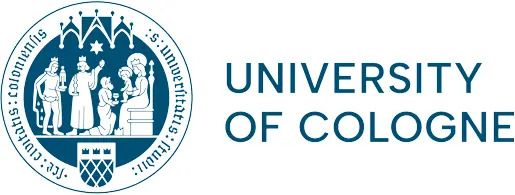Work Package 3
HUMAN SYSTEM MODEL - EARTH SYSTEM MODEL COUPLING
Human System Model – Earth System Model Coupling
This subproject within the HESCOR initiative centers on reconstructing paleoenvironmental and paleoclimate data from 45-15 ka BP using Earth System Modeling. It aims to integrate these climate models with Human System models and apply the resulting coupled systems to address various archaeological and anthropological questions, for example the occupation of Europe by the Genetical Modern Human (see Figure 1). This project is crucial for understanding the intricate relationships between Earth’s past climates and human evolution, offering insights into the resilience and adaptability of human societies in the face of environmental changes.
Related Publication
Y. Shao, H. Limberg, K. Klein, C. Wegener, I. Schmidt, G. C. Weniger, A. Hense, and M. Rostami. Human-existence probability of the aurignacian techno-complex under extreme climate conditions. Quaternary Science Reviews, 263:106995, jul 2021. ISSN 02773791. doi:10.1016/j.quascirev.2021.106995.
Figure 1: Estimation of possible dispersal routes derived from a climate based Human Expansion Model and borders of occupation for both Aurignacian phases (P1: 45-38k BP, P2: 38-33k BP), with the likely migration routes corresponding to the first and the routes of expansion to the second phase. See Shao et al. (2021) for further details.

Susanne Crewell
Principal Investigator WP3
Institute of Geophysics and Meteorology

Annika Vogel
Researcher WP3
Institute of Geophysics and Meteorology
Learn about the
HESCOR WORK PACKAGES
Work Package 1
HESCOR THEORY & FRAMEWORK
The first subproject of the HESCOR initiative focuses on advancing the theoretical, conceptual, and strategic aspects of Human and Earth System Coupled Research.

Work Package 2
HUMAN SYSTEM MODEL DEVELOPMENT & HUMAN LEARNING
This subproject in the HESCOR initiative is dedicated to integrating key terms from human system analyses into the broader context of human and Earth system coupling.

Work Package 4
PARTIAL DIFFERENTIAL EQUATIONS FOR DISPERSAL ON POPULATION NETWORKS
This project in the HESCOR initiative focuses on modeling human dispersal across population networks using partial differential equations (PDEs) and numerical simulations.

Work Package 5
GLOBAL ARCHAEOLOGICAL CULTURAL DATABASE
This project within the HESCOR initiative explores paleoclimate tipping points and their impact on cultural evolution.

Work Package 6
MACHINE LEARNING & CULTURE CLUSTERS
HESCOR WP6 focuses on cultural clustering and machine learning to study cultural evolution in the context of climate change.

Work Package 7
MULTIREGIONAL CULTURAL EVOLUTION IN AFRICA
This project aims to model multiregional scenarios of human culture evolution in Africa during the last 300 millennia against the backdrop of changing environmental conditions.

Work Package 8
EARLY EXPANSION & POPULATION DYNAMICS
This project focuses on modeling human expansion and population dynamics during the Palaeolithic and Neolithic periods, particularly examining the Out-of-Africa scenario and the spread of farming societies over Europe.

Work Package 9
ENVIRONMENTAL PERCEPTION THROUGH TIME
This project involves reviewing and analyzing research from various fields, including landscape archaeology, environmental history, anthropology, and literary studies, to understand how cultural perceptions have shaped human responses to past climatic changes.

Work Package 10
CLIMATE CHANGE & PUNCTUATED PRESENCE
Climatic fluctuations in the past impacted the presence and cultural development of early modern humans in Europe.

Coordination
COORDINATION
The coordination office is dedicated to the scientific coordination and management of the HESCOR project.

Data Management
DATA MANAGEMENT & WEBSITE
The project's website acts as the primary platform for sharing information.



